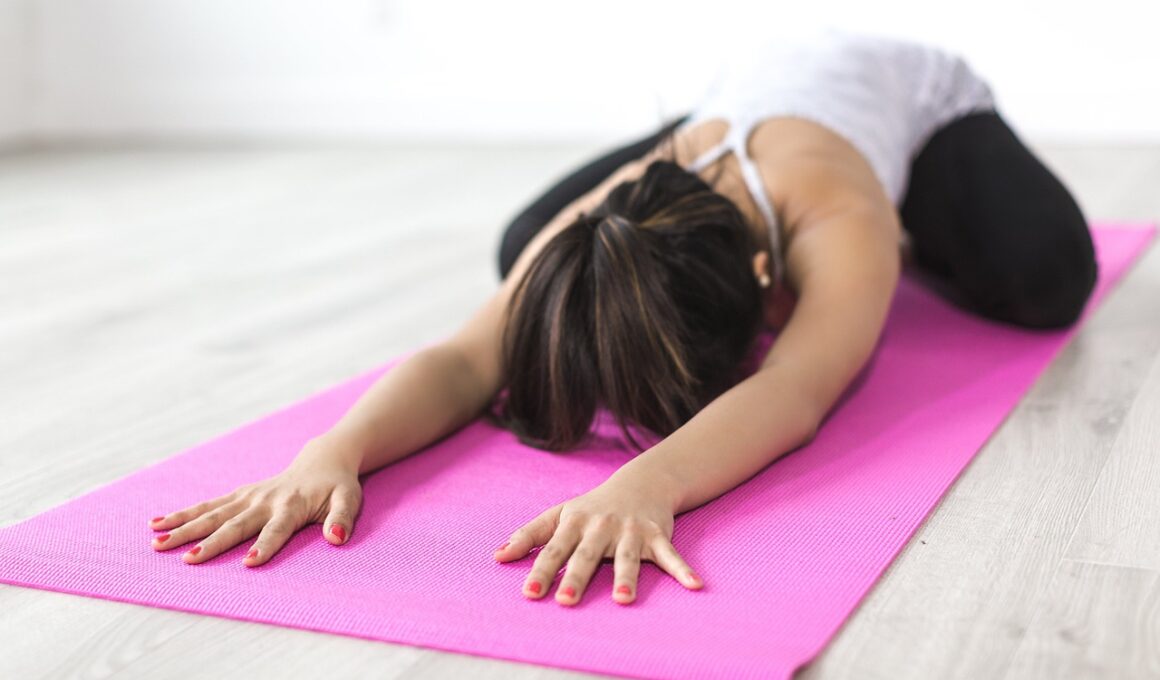Enhancing Reaction Time through Mindful Visualization
When athletes strive to improve their performance, many factors come into play. Among them are physical fitness, nutrition, and mental strategies. Mindful visualization is a technique that many athletes have started incorporating into their training regimens. It involves creating mental images of desired outcomes or behaviors during physical activities. Properly applied, visualization can improve reaction times significantly, helping competitors respond swiftly in critical situations. This technique has been used by elite performers across various sports, including basketball, soccer, and tennis. The premise is simple: by vividly imagining the action before it occurs, athletes can enhance their neural pathways. Visualization primes both the brain and body to react more efficiently. Developing this skill requires consistent practice and focus. Athletes should set aside time during their training for deep visualization exercises. These sessions ensure that they anticipate the required actions or movements during high-pressure gameplay. For instance, a sprinter may visualize the starting blocks and race before the actual event. Ultimately, integrating mindfulness and visualization leads to enhanced athletic performance.
To implement mindfulness effectively, athletes need to create a mental space conducive to focused visualization. Practicing mindfulness meditation is beneficial for this purpose. Meditation helps clear the mind, enabling individuals to focus on specific mental imagery aligned with their athletic goals. During visualization practice, it’s pivotal to picture oneself performing the task successfully. This cognitive rehearsal can subsequently influence real-life execution, leading to improved outcomes. Athletes should aim to involve as many senses as possible, engaging not just sight but also sound, touch, and even smell while visualizing their performances. This multi-sensory approach enriches the visualization experience, making it feel more real. The next step involves combining visualization techniques with physical practice. For instance, a swimmer could visualize the perfect stroke while in the water during laps. This technique often enhances muscle memory and confidence simultaneously, contributing to a boost in overall performance. Additionally, regular practice can create a psychological edge in competitive scenarios. Familiarity with the mental imagery aids reaction times during competitions as athletes become more comfortable with imagined scenarios.
The Science Behind Visualization
Research supports the efficacy of mindfulness and visualization techniques in sports performance. Studies have shown that athletes who consistently use visualization experience measurable improvements in their reaction times and overall performance. For instance, a study published in the Journal of Sports Psychology revealed that participants who practiced visualization achieved faster response times compared to those who did not engage in such exercises. The brain utilizes similar neural pathways during both real and imagined activities, reinforcing muscle memory and enhancing reaction capabilities. This understanding underscores why mindful visualization is particularly effective. It not only builds confidence but also prepares athletes for the high-pressure moments inherent in competitive sports. By visualizing success, athletes can decrease anxiety levels in actual competitions. Recognizing potential stressors and mentally rehearsing their responses facilitates better-stressed management. Additionally, employing visualization strategically helps athletes overcome performance slumps. By re-imagining successful scenarios in their minds, they can regain confidence and clarity, thus improving their reaction capabilities. This mental skill is something every athlete can nurture, leading to enhanced performance and satisfaction in their respective sports.
Consistent practice is crucial for mastering visualization techniques. Athletes can start by dedicating time after their workouts or during periods of downtime. During these moments, they can find a quiet place, close their eyes, and visualize themselves performing specific tasks. To refine this practice, maintaining a positive mindset is also essential. Affirmations can complement visualizations to reinforce the belief in their abilities. Combining mental imagery with affirmations builds a powerful mental tool that can significantly improve reaction times. Setting goals is an effective method to establish focus during these sessions. For instance, a football player may aim to visualize a successful pass during a crucial game scenario. Documenting these experiences can further solidify progress, allowing athletes to track improvements over time. They can encourage self-reflection by maintaining a visualization journal, noting feelings, outcomes, and areas needing work. An iterative approach to visualization ensures athletes can adapt their techniques and strategies as they progress. As athletes become more familiar with these tools, they will find it increasingly natural to tap into this lodged potential when it matters most, enhancing performance.
Practical Tips for Athletes
For athletes aiming to enhance their visualization skills, certain practical tips can facilitate success. Firstly, it’s beneficial to set specific, measurable goals for visualization practices. This clarity can guide the imagery process, making it more directed and fruitful. Ensure to create a detailed mental movie of the desired performance, engaging all senses for an immersive experience. Regular practice in a distraction-free environment allows for deeper immersion. Consider employing soothing music or nature sounds to enhance focus. Setting aside at least 10–15 minutes daily for visualization can help integrate this practice into a routine. Developing a consistent schedule encourages retention and growth within these skills. It’s essential to be patient; improvement takes time, and results may not appear immediately. Keeping an open mind and being receptive to experimentation with different techniques will yield the best results. Incorporate positive affirmations and self-talk during visualization exercises to cultivate a stronger belief system. Finally, utilize visualization techniques during warm-ups before actual events. This pre-event mental preparation can create a significant psychological advantage as athletes enter competition, improving their innate reaction abilities.
Including visualization in a comprehensive training program is essential for any athlete. While physical training builds strength and stamina, mental training creates the necessary tools to execute effectively under pressure. Combining mindfulness and visualization offers a holistic approach to improving reaction times and overall athletic performance. Athletes need reminders that both mental and physical aspects contribute equally to training. For optimal benefits, incorporating these mental techniques alongside technical skill development is vital. Athletes may also consider working with visualization coaches or sports psychologists to refine their techniques. Professional guidance can help pinpoint areas needing focus, enhancing the visualization experience. With their expertise, athletes can discover tailored strategies that suit their unique needs. Furthermore, they can also help athletes manage stress and anxiety through mindfulness techniques. Embracing a combined approach ensures complete preparedness for any competitive environment. This multifaceted training regime can lead to remarkable improvements, benefiting athletes across various sports. As more athletes embrace mindfulness and visualization strategies, the evolution of sports performance continues to enhance resilience, focus, and reaction times, carving pathways for future successes.
Conclusion
In conclusion, mindful visualization is a powerful tool that athletes can use to enhance their reaction times. As the landscape of sports continues to evolve, it becomes evident that mental strategies are just as crucial as physical preparation. By incorporating consistent visualization practices, athletes can experience substantial improvements in their performance. Meditation and mindfulness create the foundation, while purposeful visualization refines skills and builds confidence. With consistent application, athletes can create a seamless connection between the mind and body, resulting in quicker reactions during competitions. This improved synergy can ultimately lead to heightened competitiveness and better overall performance in various sports. Adopting these techniques can provide athletes with an edge, making them adaptable and resilient in high-pressure situations. The convergence of mindfulness and visualization techniques reflects an emerging trend in athletic training, demonstrating that mental fortitude is indispensable. Looking ahead, nurturing these skills will ensure athletes can maximize their potential and respond effectively to challenges. Embracing mindful visualization ultimately leads to not only enhanced reaction times but a more fulfilling athletic experience overall.


